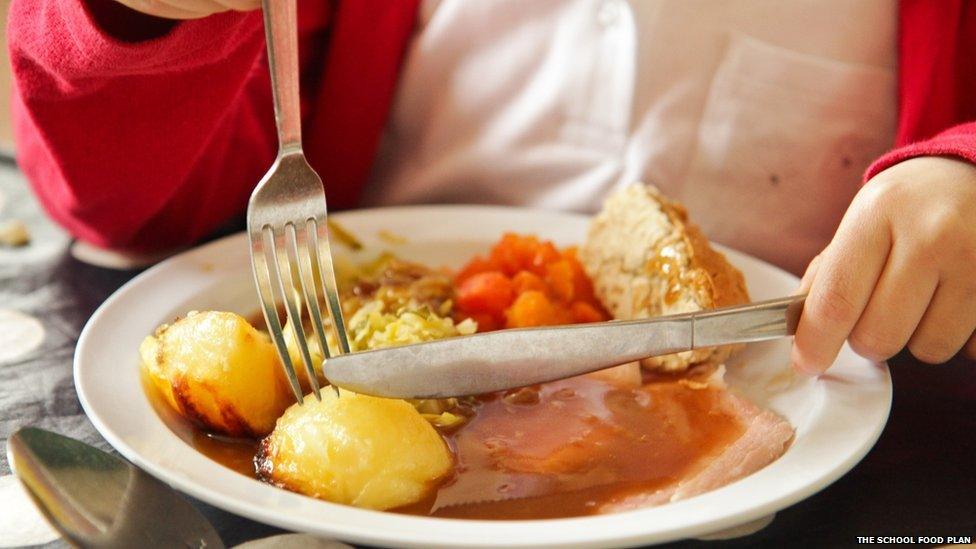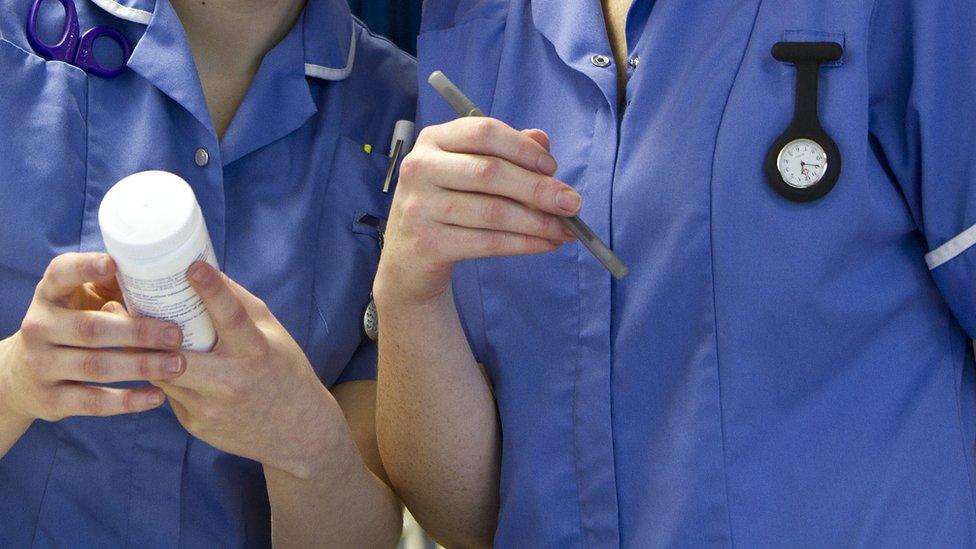Reality Check: Conservatives - where's the money coming from?
- Published
Conservative manifesto: How would pledges be funded?
After weeks of hearing about strong and stable leadership, we've finally got some numbers to look at.
But unlike Labour and the Liberal Democrats, the Conservatives have not released their overall costings in a single table in their manifesto.
What they have said is that they will aim to balance the budget by 2025, rather than the early 2020s as previously set out in the Chancellor's March Budget. In the 2015 Conservative manifesto, the party had committed to eliminating the budget deficit by 2020.
There are some headline numbers. The Tories say, for example, that they plan to spend a minimum of £8bn on the NHS.
However, the manifesto does not say how this will be paid for.

The social care changes will mean tens of thousands more families have to pay for social care provided at home - but everyone will retain at least £100,000 of their savings and assets including value in the family home.
It is a policy designed to take account of the fact that we are living longer.
The Conservatives also want to raise money by means testing the winter fuel allowance - ensuring that payments go only to the least wealthy pensioners. The scheme costs about £3bn at the moment - means testing it could save about half that according to the independent Institute for Fiscal Studies.
Future tax rises?
When it comes to tax, the Tories say there will be no increase in VAT but they have scrapped their 2015 manifesto pledge not to raise income tax or National Insurance.
Whilst this leaves the door open for possible future tax rises, Labour and the Lib Dems have already promised to increase income tax to partly fund their spending plans.
The big Conservative promise in the Cameron years was the triple lock on pensions - under which the state pension rises by the rate of inflation, average earnings or 2.5%, whichever is the highest.
Theresa May wants to scrap that - losing the 2.5% guarantee. It would give the government more flexibility, but it is impossible to say how much money it might save.

Moving to education - the Conservatives want to boost school funding by £4bn over the course of the next parliament.
One of the ways they plan to raise that money is to scrap universal free school lunches for infants - replacing them with much cheaper free school breakfasts in primary schools - but the manifesto contains no precise calculations for this.
Migration targets
Immigration policy also looms large in Conservative plans.
They plan to double - from £1,000 to £2,000 - the amount companies have to pay to import highly-skilled workers from outside the EU. We do not know how much that might raise.
The Conservatives have also reaffirmed their target of cutting overall net immigration to less than 100,000 per year.
The independent Office for Budget Responsibility has estimated that cutting annual net immigration from about 273,000 now to 185,000 by 2021 - still a long way short of the 100,000 target - could cost £5.9bn - because of things like a lower tax take and a higher proportion of non-working people in the overall population.
So that is something that will have to be taken into account in the immigration debate to come and that emphasis on immigration is a reminder that this is an election taking place in the shadow of the looming Brexit negotiations.
The outcome of those talks over the next two years is deeply uncertain at the moment.
The manifesto reasserts that the Conservatives think no deal with the EU is better than a bad deal.
So the EU negotiations will probably do more than anything else in the next parliament to determine the health of the British economy and the chances for any political party to put their promises into practice.



- Published18 May 2017

- Published15 May 2017
- Published14 May 2017
